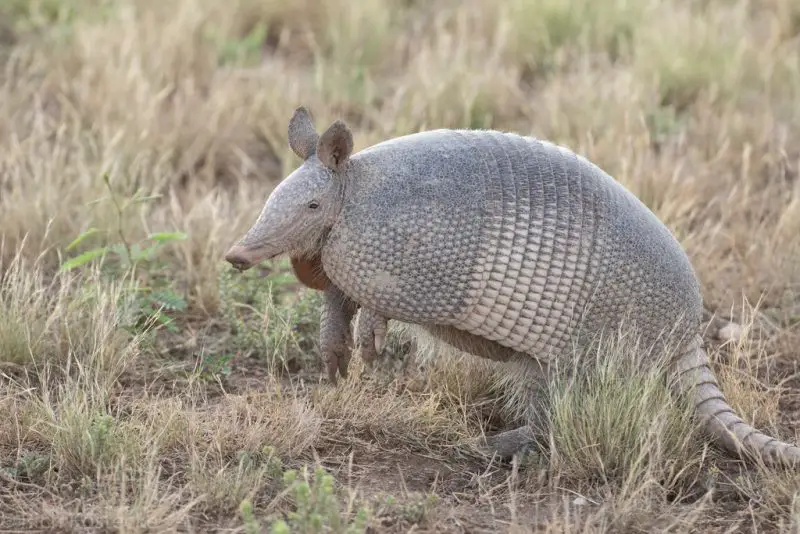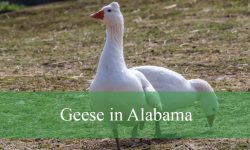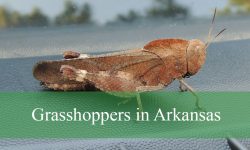In recent decades, the nine-banded armadillo has become an increasingly common sight far beyond its traditional southern range. Once confined primarily to the warmer climates of Central and South America, these curious, armor-clad mammals have steadily pushed their boundaries northward into the United States. Now, their presence in Oklahoma is no longer surprising—but the story doesn’t end there. Armadillos are continuing their expansion, moving farther north each year into states where they were once completely absent.
This expansion has raised questions among scientists, ecologists, and residents alike. What factors are driving the northward spread of armadillos from Oklahoma into areas with colder winters and different ecosystems? The answer involves a complex interplay of environmental change, behavioral adaptability, and shifts in ecological dynamics. As climate patterns evolve and landscapes are reshaped by both natural forces and human activity, the armadillo is becoming an emblem of how wildlife adapts in a changing world.
Understanding the armadillo’s northward expansion from Oklahoma requires examining multiple variables, from climate shifts and food availability to reproduction, dispersal habits, and the lack of natural predators. This article explores these factors in detail, offering insight into one of the most intriguing wildlife migrations in modern North American history.
The Biology and Behavior of the Nine-Banded Armadillo

The nine-banded armadillo, scientifically known as Dasypus novemcinctus, is a small to medium-sized mammal with a distinctive protective shell made of bony plates. This armor serves as a natural defense against predators, although its effectiveness varies. Armadillos are solitary, nocturnal creatures that rely heavily on their sense of smell to locate food, primarily consisting of insects, grubs, and other invertebrates hidden just beneath the soil.
Unlike many mammals, armadillos are not particularly territorial. They roam widely in search of food and suitable burrows, and their movement patterns are influenced by seasonal changes and habitat conditions. Their reproductive habits are also unusual. Female armadillos almost always give birth to genetically identical quadruplets, a trait that accelerates population growth in regions where survival conditions are favorable.
Armadillos are not equipped to tolerate extremely cold temperatures for extended periods, as their body temperature is lower than most mammals, and they lack sufficient fat reserves for insulation. Despite this physiological limitation, they have continued to push into colder northern territories. This contradiction lies at the heart of their expansion and invites a deeper exploration of how environmental factors are changing around them.
Climate Change and Milder Winters
One of the most significant factors contributing to the northward expansion of armadillos from Oklahoma is the increasing frequency of milder winters across the central and northern United States. Historically, freezing temperatures and prolonged snow cover would have acted as natural barriers, limiting the spread of warm-climate species like armadillos. However, climate data over recent decades shows a clear trend toward warmer winter lows and shorter durations of frost and snow in many parts of the country.
These shifts create more hospitable conditions for armadillos to survive the winter months. Even brief periods of extreme cold can be lethal to them, especially if the ground is frozen, preventing them from foraging for food or digging protective burrows. As winters become less severe, armadillos face fewer survival challenges, enabling them to establish breeding populations in areas previously beyond their physiological limits.
The consistent pattern of warming trends has led to increased overwinter survival of armadillos in Oklahoma and points northward. This, in turn, results in greater numbers and more frequent exploratory movements by young armadillos in search of new territory. Over time, this expansion becomes self-sustaining, as each new population establishes a foothold in areas once too cold for habitation.
Habitat Availability and Human-Altered Landscapes
As the human footprint continues to reshape the landscape, armadillos have found new opportunities to thrive. Agricultural fields, suburban lawns, roadside ditches, and golf courses offer ideal foraging grounds for these insectivores. Loosely packed soil, frequent irrigation, and disturbed vegetation provide easy access to their preferred diet of ants, beetles, and other soil-dwelling invertebrates.
In Oklahoma and beyond, habitat fragmentation and land development often result in patchy woodlands, open fields, and grassy corridors that suit armadillos well. These transitional habitats offer a mix of cover and food availability, as well as space for digging burrows. Unlike more specialized species that struggle in human-modified environments, armadillos are generalists that adapt easily to change.
Urbanization also reduces the presence of natural predators, particularly large carnivores. In areas where coyotes, bobcats, and foxes are present in lower numbers due to habitat loss or human suppression, armadillos face fewer threats. This reduced predation pressure, combined with abundant food and shelter, creates an ideal scenario for population growth and territorial expansion.
Dispersal Patterns and Juvenile Exploration
Armadillo populations in Oklahoma are growing not just because of increased survival but also due to the way young individuals disperse. After a female gives birth to quadruplets, the young typically remain with her for several months before setting out on their own. This process of dispersal is critical to colonization efforts, as it pushes the geographic boundaries of the species outward from established populations.
Juvenile armadillos are especially likely to travel significant distances in search of unoccupied habitat. Their movement is driven by instinct and environmental cues rather than social bonds, which allows them to explore and establish in new areas without needing a supporting group. Over time, this behavior leads to a steady expansion of the species’ range, with younger generations populating regions beyond the frontier reached by their parents.
In many ways, the dispersal behavior of armadillos mirrors the classic biological principle of range expansion following favorable conditions. As long as food is available and winter conditions remain survivable, juvenile armadillos will continue pushing the boundaries of their habitat, increasing both the number and diversity of regions they inhabit.
Lack of Natural Barriers and Geographic Opportunity
Another key element in the northward movement of armadillos from Oklahoma is the lack of significant geographic barriers. Much of the central United States features gently rolling terrain, wide river valleys, and open plains that offer little resistance to terrestrial mammals. Unlike mountainous regions or dense northern forests, which may slow or redirect movement, the landscape north of Oklahoma is relatively open and easy to navigate.
In this type of environment, armadillos can expand gradually, moving across state lines without encountering physical obstacles that would prevent colonization. Rivers, while sometimes challenging for small mammals, are often not enough to halt their progress, especially when surrounding areas provide suitable habitat. Additionally, roads and railway embankments, while potentially hazardous, can act as linear corridors that facilitate movement rather than restrict it.
The geography of the Midwest and Great Plains essentially invites exploration, offering continuity of habitat types and few natural stopping points. With each generation, the armadillo’s range expands further north, propelled by opportunity and the absence of resistance in the form of natural terrain.
Reproductive Advantage and Population Growth
The reproductive strategy of the nine-banded armadillo also plays a central role in its rapid range expansion. Each reproductive cycle typically results in four genetically identical offspring, allowing for quick population growth in newly colonized areas. This strategy is particularly effective when environmental pressures are low and food is abundant.
In regions like Oklahoma, where winters have become milder and habitats remain productive throughout the year, armadillo populations can grow quickly. Each successful litter multiplies the chances of further dispersal, as the young are driven to find their own territories. Over time, even modest annual population increases result in exponential growth and spread.
Furthermore, armadillos reach sexual maturity within a year and can reproduce annually. This quick turnaround enhances their ability to colonize and adapt to new environments. Unlike species with slower reproductive rates or higher juvenile mortality, armadillos benefit from a biological edge that allows them to take full advantage of new opportunities.
Absence of Competition and Ecological Niche Filling
In the ecosystems into which they are expanding, armadillos often encounter little direct competition for their preferred food sources. Their diet of insects and small invertebrates places them in a relatively underutilized ecological niche, especially in areas where native species do not heavily exploit ground-dwelling insect populations.
This lack of dietary overlap reduces conflict and competition with other mammals, such as raccoons or skunks, and allows armadillos to establish themselves without needing to displace existing wildlife. Their specialized digging behavior also opens access to food resources that many other species cannot reach, giving them an advantage in exploiting the soil ecosystem.
Additionally, their burrowing habits contribute to soil aeration and structure, subtly impacting the ecosystems they inhabit. While they may not be top-level influencers, armadillos do change the environments they colonize, creating new interactions and dynamics as their presence becomes more widespread.
Potential Risks and Emerging Challenges
While the northward spread of armadillos is a testament to their adaptability, it also raises concerns about potential ecological impacts and human-wildlife conflict. In some areas, their digging behavior can damage lawns, gardens, or agricultural fields. Their tendency to forage in developed areas may lead to vehicle collisions or other accidental encounters.
Moreover, armadillos are known carriers of the bacterium that causes Hansen’s disease, commonly known as leprosy. Although transmission to humans is rare, increased contact with expanding armadillo populations could elevate the risk in certain regions. Public awareness and responsible interaction are key to minimizing such issues.
The broader ecological consequences of their expansion remain unclear. As armadillos continue to move into new habitats, scientists are closely monitoring how their presence affects native species and soil communities. Ongoing research will help determine whether armadillos function as benign newcomers or whether their spread disrupts established ecological balances.
Scientific Monitoring and Conservation Perspectives
Wildlife biologists in Oklahoma and surrounding states are tracking armadillo movements using field surveys, roadkill data, and citizen reports. These methods help create detailed maps of population spread and inform predictions about future expansion. With each new year, the boundary line of armadillo habitat moves farther north, reshaping perceptions of mammal distribution in North America.
From a conservation standpoint, armadillos represent both an opportunity and a challenge. Their success in adapting to a changing climate and human-altered landscape provides insight into how other species might respond. At the same time, their movement poses questions about the unintended consequences of such shifts, particularly in relation to biodiversity, disease, and resource competition.
By studying the armadillo’s expansion, scientists can gain a better understanding of ecological resilience and adaptability. The lessons learned may influence conservation planning, habitat restoration efforts, and climate adaptation strategies for a wide range of species.
Conclusion: A Changing Landscape and a Persistent Traveler
The expansion of armadillos from Oklahoma into the northern United States is not a coincidence, nor is it a random anomaly. It is a clear example of how wildlife responds to environmental changes, human influence, and shifting ecological dynamics. Through a combination of biological traits, reproductive efficiency, and habitat flexibility, armadillos have managed to move beyond their historical range and thrive in new regions.
Climate change has removed many of the barriers that once confined them, while modern landscapes have created new paths for exploration. Their ability to adapt to varied environments, reproduce rapidly, and avoid competition has given them an edge in the race for territory. As long as winters remain relatively mild and food continues to be abundant, the armadillo’s northward march is likely to continue.
What began as a slow push out of the tropics has become a widespread phenomenon, transforming the way scientists think about mammal migration in North America. The story of the armadillo in Oklahoma—and beyond—is a living illustration of evolution in motion, playing out across prairies, forests, and suburban backyards.
FAQs About Armadillos Expanding Northward
Why are armadillos moving north from Oklahoma?
Armadillos are expanding northward due to milder winters, abundant food, fewer predators, and adaptable behavior in human-altered landscapes.
Can armadillos survive cold northern winters?
Armadillos struggle in extreme cold but are surviving further north thanks to shorter winters and improved environmental conditions.
Are armadillos dangerous to humans?
While generally not dangerous, armadillos can carry bacteria linked to leprosy. Contact should be avoided, and handling is discouraged.






